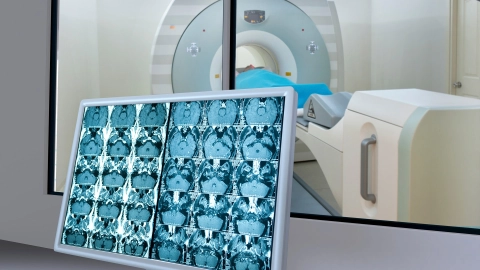ICD-Code C72.3: Malignant neoplasm: Optic nerve [2nd cranial nerve]
You have cranial nerve cancer.
The tissue in the body is made up of cells. With cancer, the cells multiply uncontrollably, which leads to a malignant neoplasm (abnormal growth of tissue) developing. The cancer cells can destroy the healthy tissue and spread throughout the body.
Various nerves run from the brain to the sensory organs in the head, and to organs in the body. These nerves are called cranial nerves. These nerves are important in seeing, tasting or hearing, for example. But the cranial nerves also control important functions in the body, such as in the lungs and heart. You have cancer of the optic nerve. To be able to see, light needs to fall into our eye. The light falls through the eye to a layer inside the eye. From there, the optic nerve routes the information on to the brain. The brain converts these impressions to images.
Not every cancer is the same. There are cancers that develop quickly. You may then quickly feel seriously ill. But there are also cancers that progress slowly. You may then feel generally unwell or weak, or even have no symptoms at all to start with. If you have cancer of the optic nerve, you can sometimes find that the nerve no longer works properly. You can no longer see very well. The optic nerve is at the back of the eye. If the cancer swells the optic nerve behind the eye, then the eye can be pushed forward.
The cancer can also grow close to the brain or into the brain. You can then also behave differently than usual or have seizures. These seizures may only affect one part of the body. A seizure may also occur without cramp. Then you are passed out for a short time.
Please note: This ICD code may also derive from the ICD-O system. If this is the case, there are usually additional letters and numbers in addition to the code. It starts with the letter M, followed by 4 digits and then a slash. There is another digit after the slash.
If it is an ICD-O code, then this does not describe a malignant cancer in all cases. The last digit after the slash gives you more detailed information about this:
- /0 – The tumor is benign. Cells in a tissue multiply uncontrollably. However, they are not destroying the surrounding tissue and are also not spreading throughout the body.
- /1 – It is not known for sure whether the tumor is benign or malignant.
- /2 – It is an early form of cancer, a precancerous stage where the cells are altered and multiply uncontrollably. However, they are not yet spreading beyond a certain margin and cannot spread to other organs either.
- /3 – It is a malignant cancer. The cells in the affected tissue are altered and multiply uncontrollably. They can destroy the surrounding tissue and spread throughout the body.
- /6 – It is a metastasis. Cancer cells have spread from the originally affected site to a different site in the body and have further multiplied there.
- /9 – It is either a malignant cancer or a metastasis. The cells in the affected tissue are altered and multiply uncontrollably. However, it is impossible to say whether these cells derive originally from the affected site or have spread there from a different site in the body.
Additional indicator
On medical documents, the ICD code is often appended by letters that indicate the diagnostic certainty or the affected side of the body.
- G: Confirmed diagnosis
- V: Tentative diagnosis
- Z: Condition after
- A: Excluded diagnosis
- L: Left
- R: Right
- B: Both sides
Further information
Source
Provided by the non-profit organization “Was hab’ ich?” gemeinnützige GmbH on behalf of the Federal Ministry of Health (BMG).



